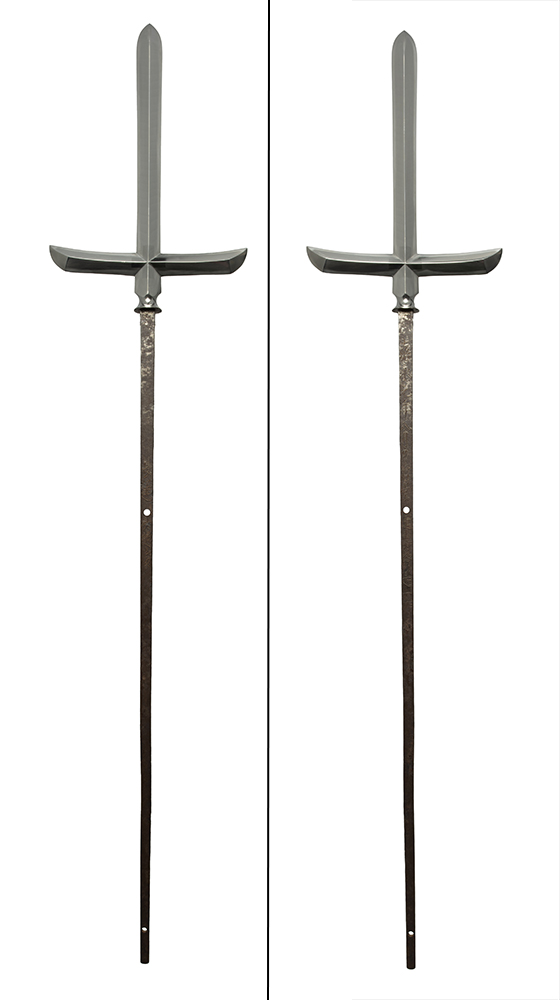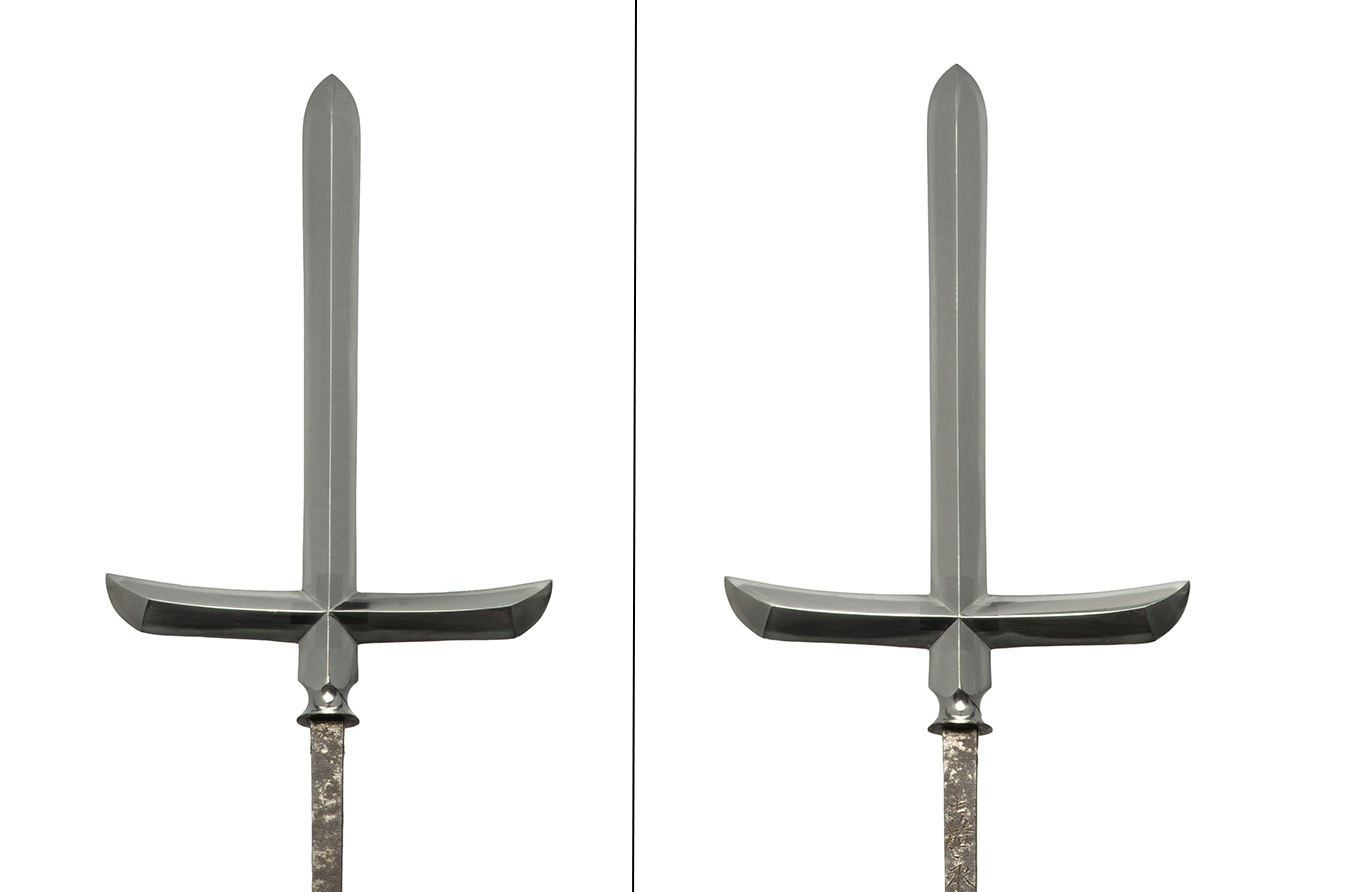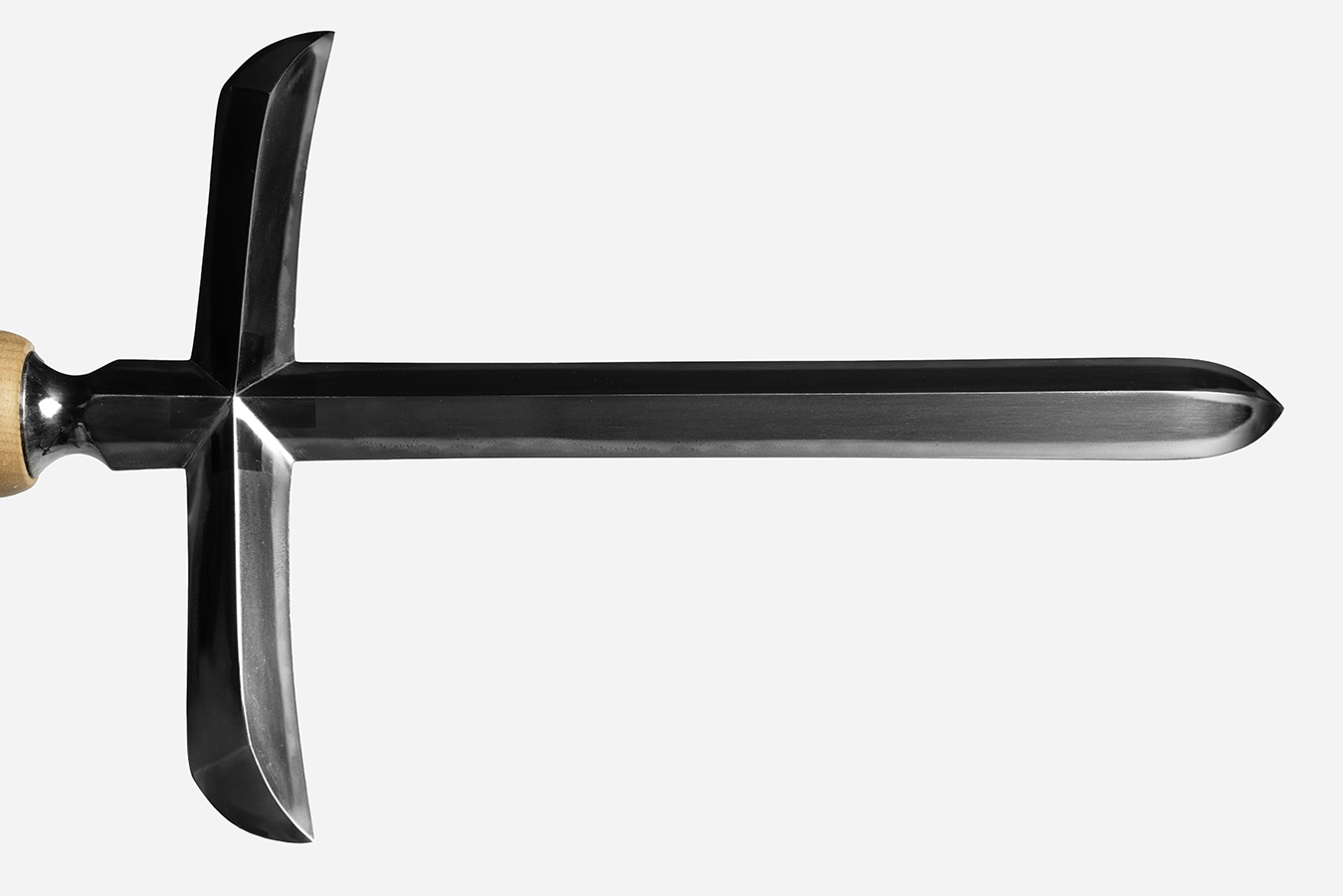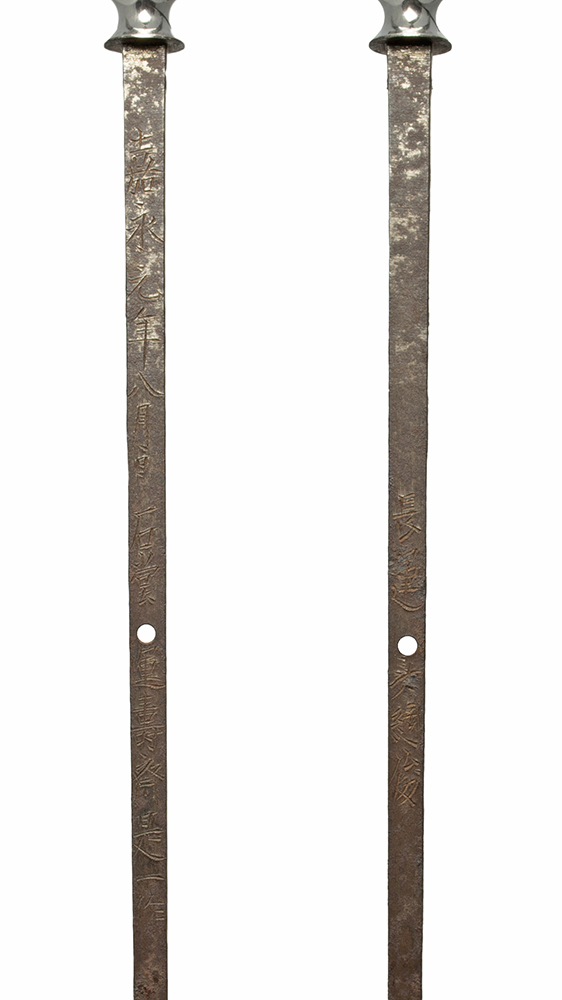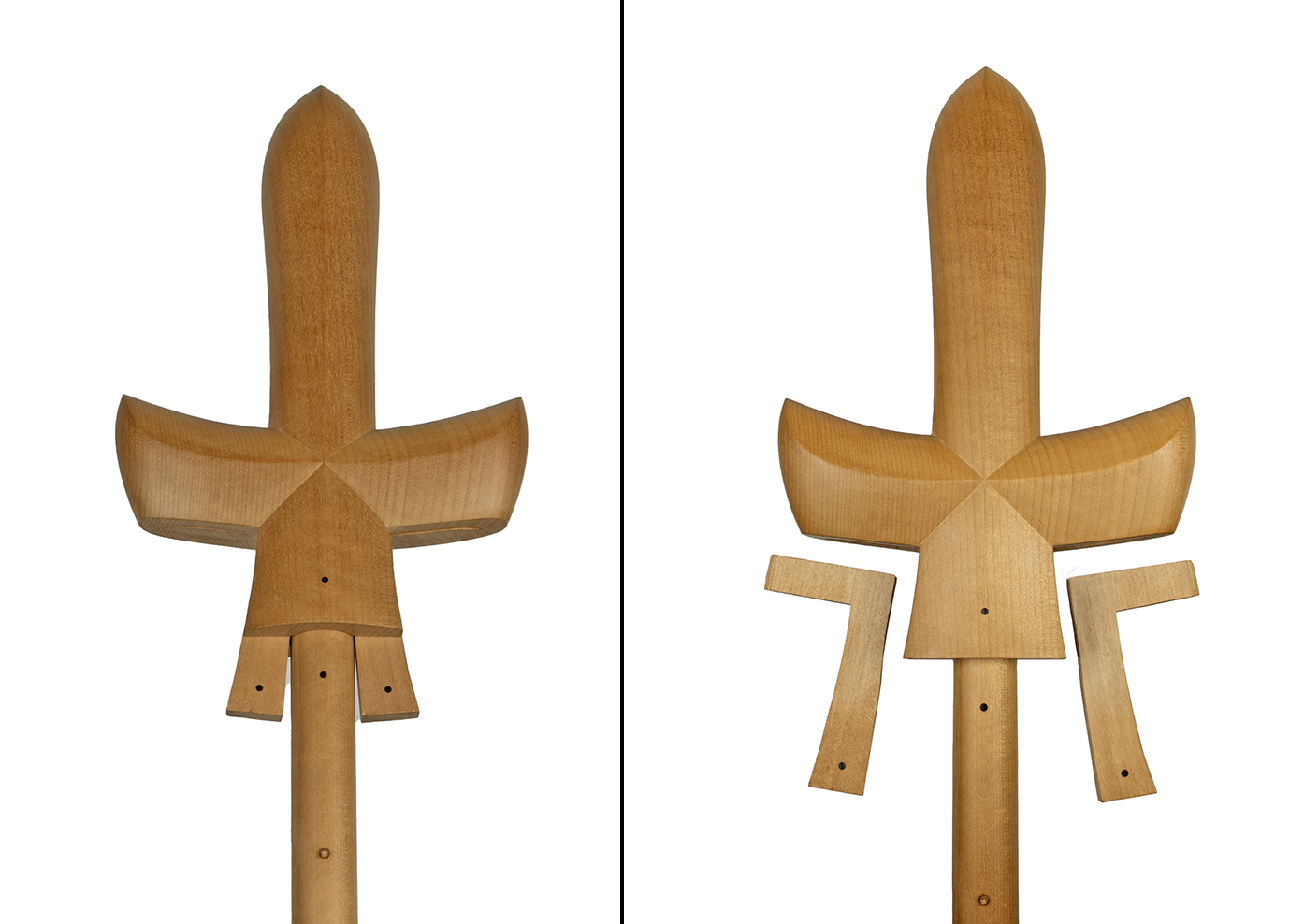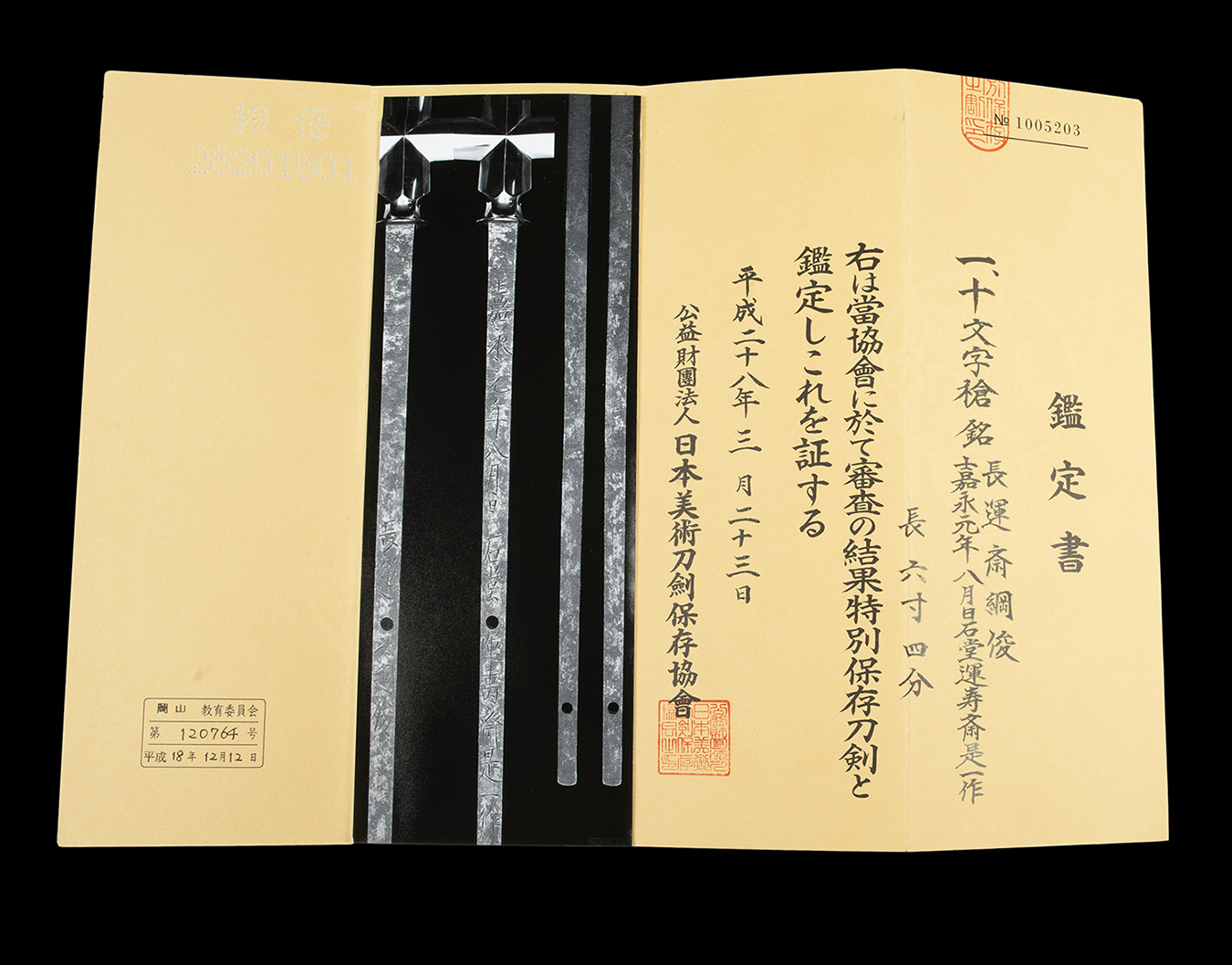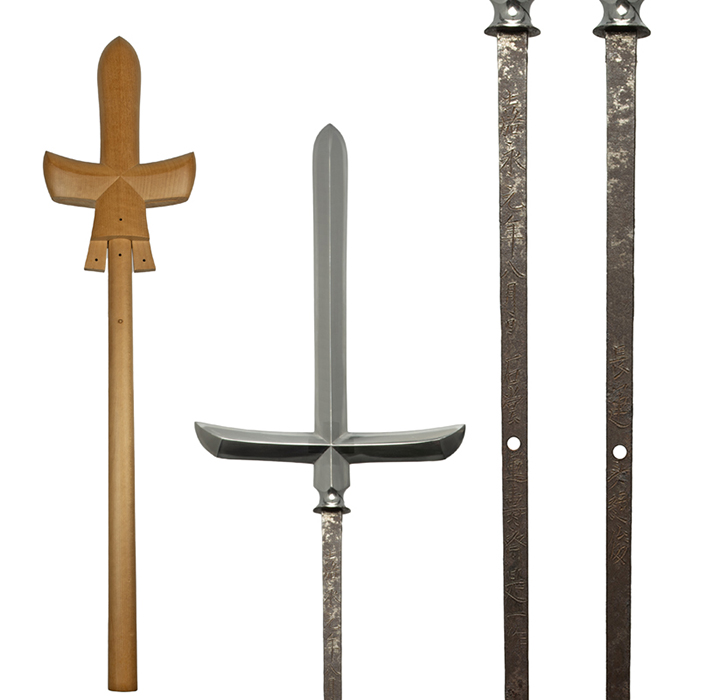|
| |||||||||||||||||||||||||||||||||
Hamon : Nie-deki sugu gunome. There are ashi in the valleys of the gunome. Kuchigaiba can be seen. Ara nie are also present.
Kitae : Tight grained itame becoming muji hada with ji-nie.
About this sword : A fine Jumonji yari from the Bakumatsu period. This example is a jointly made work by the shodai Chounsai Tsunatoshi and the seventh generation Ishido Korekazu. Both of these smiths are highly-regarded craftsmen. Chounsai Tsunatoshi is ranked 4 million yen in the Tokotaikan and Jo Saku in Fujishiro. He and his father, Kato Kunihide, were both students of Suishinshi Masahide. Tsunatoshi had many students and was prosperous serving the Uesugi family, the daimyo of Yonezawa. The seventh Korekazu is ranked 4 million yen in the Tokotaikan and Jo Jo Saku in Fujishiro. Born in 1820 and said to be either the second son of Chounsai Tsunatoshi or his nephew. He was adopted by the sixth generation Korekazu and became the head of the Ishido line in 1841. This yari has high empirical value as a dated example of the collaboration of these famous smiths, with both of their mei. It is an important example to preserve.
This yari is in nice polish and there are no kizu. The polish of jumonji yari is expensive and difficult. It is almost impossible for a polisher to work on one without cutting their hands. This design has 20 facets to polish. A very challenging task and admirably executed in this example.
The shira-saya for this Jumonji yari is rather fine. It features two wooden inserts to enclose the bottom of the saya. It is so carefully fitted that it can only be assembled one way and dots are inserted on each front panel to assist in proper assembly.
Accompanied by a NBTHK Tokubestu Hozon paper and the deluxe shira-saya mentioned above. An exciting collaborative work, dated (1855) by two of the most famous Edo area Shin-Shinto smiths. A pleasure to study and a delight to recommend.
$5500
SALE $4800
